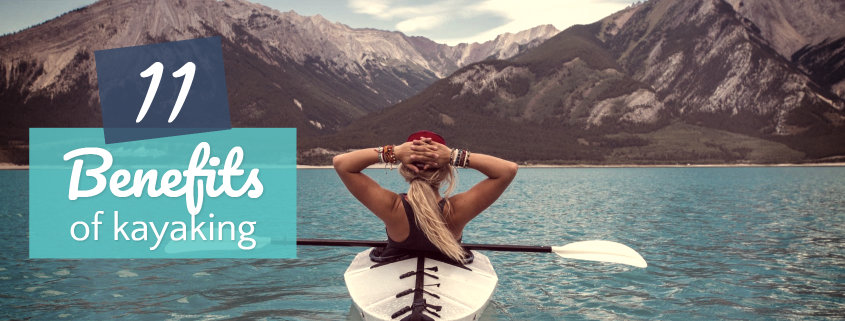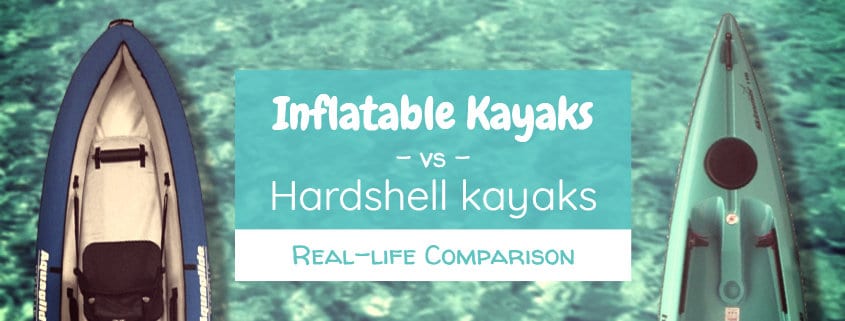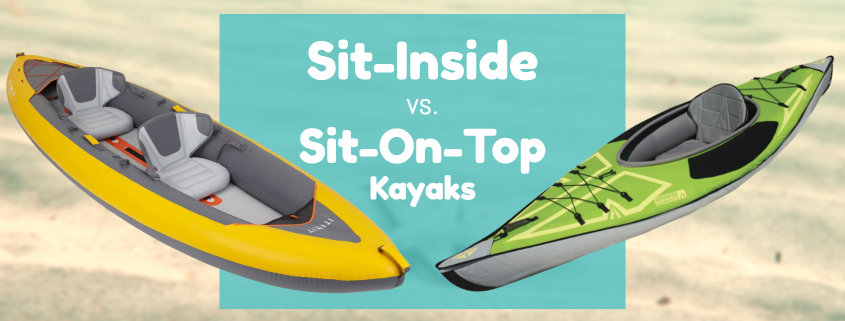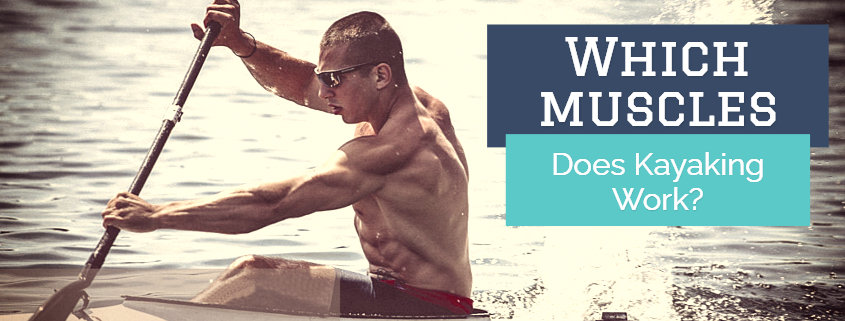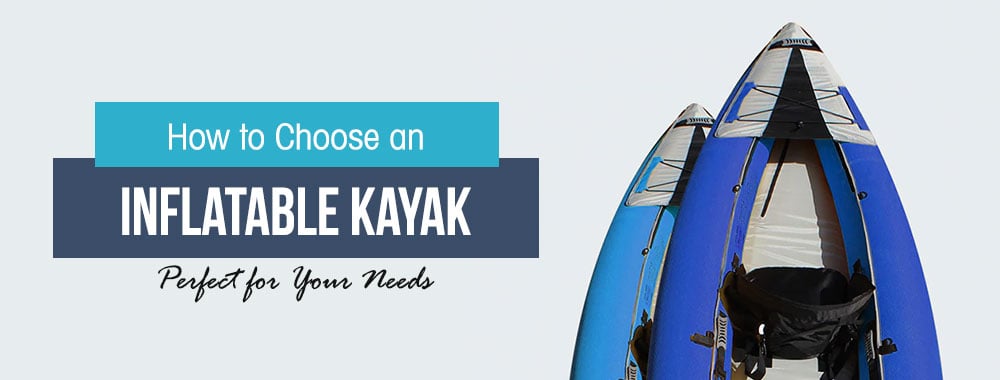Regardless of whether you’re clenching your paddles while white water rafting or cruising along the glassy, calm surface of a lake, kayaking is an excellent way to maintain your physical & mental fitness.
Kayaking is one of the most beneficial forms of exercise, since it:
- improves strength,
- increases fitness,
- helps maintain flexibility,
- has a multitude of mental health benefits.
Here is a list of the main mental health benefits of kayaking, followed by the physical benefits:
Contents
It helps you stay balanced and calm

Everybody knows that emotions can quickly spill over and, in the worst-case scenario, escalate into unrest.
It is not always easy to be calm and serene, which is where kayaking comes in.
Kayaking on calm waters causes a meditative balance for many people. It helps put you into the right state of mind for a feeling of serenity and calmness. You can forget everything, all doubts, and worries, all negative thoughts evaporate while you discover nature.
Kayaking reduces stress
If you face stress at work or in your private life, doing sports is the best way to reduce it.
Kayaking has been proven to reduce stress levels better than most other sports, and I think the reason is obvious:
Kayaking is good for the body, mind, and soul at the same time.
How does kayaking achieve stress relief?
- Kayaking is all about discovering new things and places, which keeps your mind on the present. Be it calm waters, tranquil areas, or raging rapids, a similar activity with such a degree of serenity is hard to find. It is hard to beat the relaxing sounds of nature and trickling water.
- Kayaking is a physical activity, and as such, it bumps up the production of your brain’s endorphins, which are effectively feel-good neurotransmitters.
It improves your mental health and focus
Other than reducing stress, paddling has other mental health benefits as well.
Since kayaking requires the body and mind to work together, it helps develop a better sense of self.
While you focus on being the best kayaker you can be, there is little room or time for unwanted or negative thoughts. Engaging in such activity positively affects your metabolic rate and creates a sense of well-being, self-confidence, and a good mood.
The challenge you face on the water, coupled with the serenity of mind and connection to nature, stimulates a sense of well-being; hardly any other outdoor activity can accomplish that.
Quality time with your family on the water
With the constant rush of modern daily life, many people have less and less quality time to spend with their family.
This is especially true for families with children. In between school, homework, and after-school activities, there is far too little time to spend together.
Instead of spending the weekend at home watching TV and playing video games, go on a kayaking trip.
Your kids will enjoy an exciting activity, you’ll explore new places, and best of all, you will spend quality time together as a family. No interruptions, no screens: just your loved ones, you, and nature.
Build a community
Kayaking is a terrific way like-minded people can come together and enjoy a common hobby.
People of all ages and all levels of fitness can join kayaking groups, where they can socialize and make new friends.
For example, the kayaking groups on meetup.com has close to 3 million members spread out among 2000+ groups all over the world.
Now lets move on to the main physical health benefits of kayaking:
Kayaking helps you lose weight and improve your conditioning
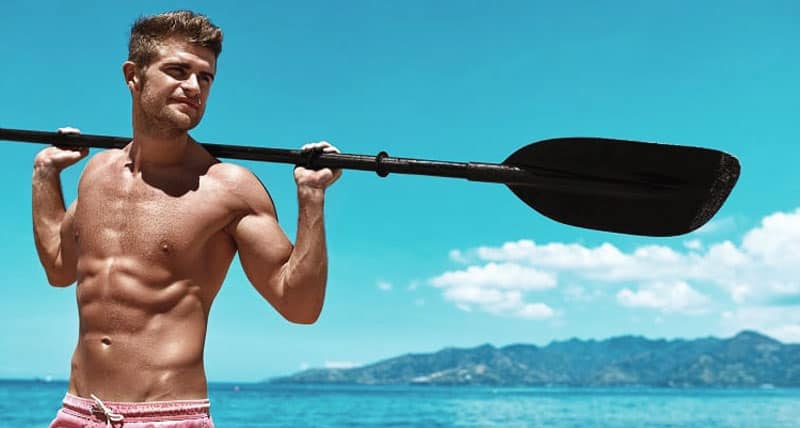
Kayaking can help improve your endurance and help you lead a more active lifestyle. With all the extra exercise and strain on your muscles, you’ll enjoy easier weight loss and more strength.
How many calories does kayaking burn?
Since kayaking is a full-body exercise working every muscle in your body, you will burn around 400 calories per hour of kayaking (Source: Harvard Medical School).
You strengthen and define every muscle in your body
Although it may seem like you are only working with your arms when paddling, you are actually using every muscle in your body.
- Your core muscles provide the balance needed while directing power with your paddle.
- When paddling a kayak, you have to move the paddle from side to side. This encourages, strengthens, and defines the abdominal muscles.
- By pressing your legs against the inside of the kayak and the footpeg, you balance yourself in the kayak. This is an isometric exercise with continuous muscle tension, which strengthens your legs.
- Your chest, shoulders, arms, and back do the actual paddling, creating an all-in-one exercise for your upper body muscles.
Using a strong paddle stroke challenges every muscle in your upper body. At a speed of 3mph, you can expect to have completed around 1500 reps of a light low-impact upper body workout in an hour.
Make no mistake. Paddling can increase your muscle strength dramatically if you approach it as a rigorous form of exercise.
It can be an alternative to aerobics in achieving general fitness
We all know that aerobic exercise is one of the best workouts for the body.
Why?
Because it lowers sugar levels, improves heart rate, lowers cholesterol levels, lowers blood pressure, and strengthens lung function.
Still, not everyone likes aerobics. I know I don’t! But then, what is the answer?
Kayaking! It is an excellent alternative to aerobic fitness workouts.
Ultra low-impact workout
High impact exercises like running, aerobics, CrossFit, etc., may not suit everybody because of their toll on their bones and joints.
On the other hand, kayaking with proper paddling technique is a low-impact activity with minimal effect on your connective tissues, joints, and bones.
At the same time, this is not to say that it is a good option for people who already have problems with their hips, knees, or back. Make sure you use proper kayaking form to take full advantage of the benefits of kayaking and avoid kayaking back pain.
Great source of vitamin D
Even though scientists are publishing more and more research papers on the importance of vitamin D, the deficiancy of vitamin D is a serious problem in todays modern (indoor) society.
Kayaking in sunny weather is great for helping your body make vitamin D, making your bones stronger and boosting your immune system to keep you from getting sick.
Make sure to use sunscreen, sunglasses, and head protection in periods of high UV though, you don’t want to get too much of a good thing.
It’s good for your heart health & circulatory system
We all know that a strong heart is vital for our overall well-being, and kayaking is exceptional for steadily improving the health of our cardiovascular system.
How does kayaking affect your heart health?
Think of it as a no-impact form of aerobics. As with all cardiovascular exercises, your heart rate increases pumping your blood more forcefully, which dilates (opens) your blood vessels. You start breathing quicker to get more oxygen into your bloodstream, making your lungs stronger as well.
Your cardiovascular health improves with each stroke and the continuous movement of paddling, which may be one of the most overlooked physical benefits of kayaking.
After reading through the above points, I hope you can see why I believe it is one of the best activities in the world. Modern inflatable kayaks like these make paddling accessible to everybody, so there are no excuses not to get into this fantastic sport.

